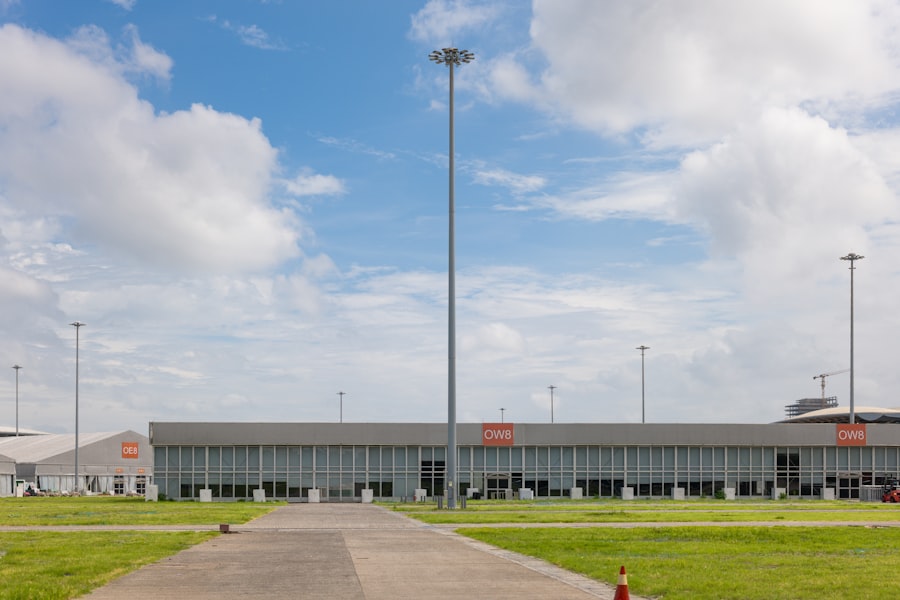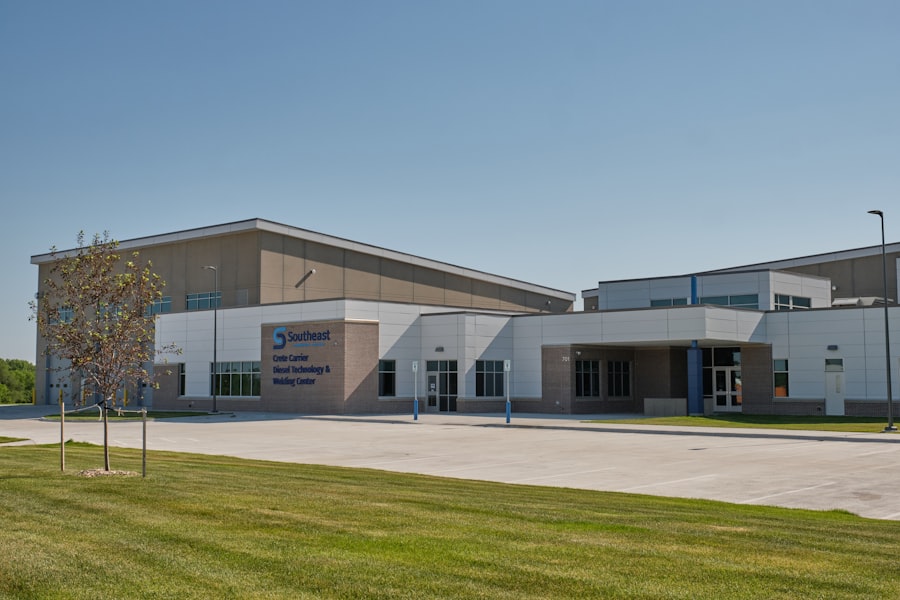The Aerospace Data Facility East (ADF-E) stands as a pivotal institution within the realm of aerospace data management and analysis. Located in the heart of the United States, this facility is dedicated to the collection, processing, and dissemination of critical data that supports various aerospace missions. ADF-E plays a crucial role in ensuring that data-driven decisions are made in real-time, which is essential for both military and civilian applications.
The facility is equipped with advanced technologies and staffed by a team of experts who are committed to enhancing the understanding of aerospace phenomena through data. The significance of ADF-E extends beyond mere data collection; it serves as a hub for innovation and collaboration among various stakeholders in the aerospace sector. By leveraging state-of-the-art technology and fostering partnerships with other organizations, ADF-E contributes to the advancement of aerospace science and technology.
The facility’s mission encompasses a wide range of activities, from supporting national defense initiatives to facilitating scientific research that pushes the boundaries of human knowledge in space exploration.
Key Takeaways
- Aerospace Data Facility East plays a critical role in national security through advanced data collection and analysis.
- The facility has a rich history focused on supporting defense and intelligence missions.
- It utilizes cutting-edge technology and equipment to process vast amounts of aerospace data.
- Collaborations with other aerospace organizations enhance its capabilities and mission effectiveness.
- Future developments aim to drive innovations in space exploration and research.
History and Mission of Aerospace Data Facility East
The origins of Aerospace Data Facility East can be traced back to the early days of the Cold War when the need for sophisticated data analysis became apparent. Established in response to the growing demands for intelligence and reconnaissance, ADF-E has evolved significantly over the decades. Initially focused on military applications, the facility has expanded its mission to include a broader spectrum of aerospace activities, reflecting the changing landscape of global security and technological advancement.
The mission of ADF-E is multifaceted, encompassing the collection, processing, and analysis of aerospace data to support national security objectives. This includes providing timely and accurate information to decision-makers in the defense sector, as well as contributing to scientific research that enhances our understanding of atmospheric and space phenomena. The facility aims to be at the forefront of aerospace data management, ensuring that it remains responsive to the needs of its stakeholders while fostering innovation and collaboration across various domains.
Cutting-Edge Technology and Equipment at Aerospace Data Facility East

At the core of Aerospace Data Facility East’s operations lies an array of cutting-edge technology and equipment designed to handle vast amounts of data efficiently. The facility is equipped with high-performance computing systems that enable rapid processing and analysis of complex datasets. These systems are essential for tasks such as satellite imagery analysis, weather modeling, and tracking aerospace vehicles.
The integration of artificial intelligence and machine learning algorithms further enhances the facility’s capabilities, allowing for predictive analytics that can inform strategic decisions. In addition to computing power, ADF-E utilizes advanced sensor technologies that capture a wide range of data from various sources. This includes satellite-based sensors that monitor atmospheric conditions, ground-based radar systems that track aircraft movements, and remote sensing technologies that provide critical information about environmental changes.
The combination of these technologies allows ADF-E to maintain a comprehensive understanding of aerospace dynamics, which is vital for both operational readiness and scientific inquiry.
Role in National Security and Defense
| Role | Description | Key Metrics | Impact on National Security |
|---|---|---|---|
| Intelligence Gathering | Collecting and analyzing information to identify threats. | Number of intelligence reports, accuracy rate, response time | Early threat detection and prevention of attacks |
| Cybersecurity | Protecting national infrastructure from cyber attacks. | Number of cyber incidents prevented, system uptime, vulnerability patch rate | Maintains integrity of critical systems and data |
| Military Defense | Deployment and readiness of armed forces. | Troop strength, equipment readiness, training hours | Deters aggression and defends national sovereignty |
| Counterterrorism | Operations to prevent and respond to terrorist activities. | Number of operations conducted, arrests made, threat level reduction | Reduces risk of terrorist attacks and enhances public safety |
| Border Security | Monitoring and controlling national borders. | Number of illegal crossings prevented, surveillance coverage, response time | Prevents illegal entry and smuggling of contraband |
Aerospace Data Facility East plays a crucial role in bolstering national security and defense initiatives. By providing timely and accurate data analysis, ADF-E supports military operations and strategic planning efforts. The facility’s ability to process real-time information from various sources enables defense agencies to make informed decisions during critical missions.
For instance, during military operations, ADF-E can provide situational awareness by analyzing data related to enemy movements, weather conditions, and potential threats. Moreover, ADF-E contributes to the development of advanced defense technologies by collaborating with military research organizations. This partnership fosters innovation in areas such as missile defense systems, surveillance technologies, and reconnaissance capabilities.
By leveraging its expertise in data analysis, ADF-E helps ensure that the United States maintains a technological edge in an increasingly complex global security environment.
Collaborations and Partnerships with Other Aerospace Organizations
Collaboration is a cornerstone of Aerospace Data Facility East’s operational philosophy. The facility actively engages with a variety of aerospace organizations, including government agencies, private sector companies, and academic institutions. These partnerships are essential for sharing knowledge, resources, and expertise that enhance the overall capabilities of ADF-E.
For example, collaborations with universities allow for joint research initiatives that explore new methodologies in data analysis and aerospace technology. One notable partnership involves working with NASA on projects related to satellite data utilization for climate research. By combining NASA’s expertise in space exploration with ADF-E’s data processing capabilities, both organizations can achieve significant advancements in understanding climate change impacts on Earth.
Such collaborations not only benefit the participating organizations but also contribute to broader scientific knowledge that can inform policy decisions at national and international levels.
Data Collection and Analysis Processes at Aerospace Data Facility East

The processes involved in data collection and analysis at Aerospace Data Facility East are intricate and highly organized. Data is gathered from a multitude of sources, including satellites, ground-based sensors, and aerial reconnaissance platforms. This diverse array of inputs ensures that ADF-E has access to comprehensive datasets that reflect real-time conditions across various domains.
Once collected, the data undergoes rigorous quality control measures to ensure its accuracy and reliability. Following quality assurance, the data is processed using advanced algorithms designed to extract meaningful insights. This analysis can take many forms, from generating detailed reports on atmospheric conditions to creating predictive models for future aerospace events.
The facility employs a team of skilled analysts who interpret the results and provide actionable intelligence to stakeholders. This systematic approach not only enhances decision-making but also contributes to ongoing research efforts aimed at improving aerospace technologies.
Impact on Space Exploration and Research
Aerospace Data Facility East has made significant contributions to space exploration and research through its extensive data management capabilities. By providing critical information about atmospheric conditions and space weather phenomena, ADF-E supports missions conducted by various space agencies, including NASA and the European Space Agency (ESA). For instance, data from ADF-E has been instrumental in planning satellite launches by providing insights into optimal launch windows based on weather patterns.
Furthermore, ADF-E’s research initiatives often focus on understanding the effects of space environments on human health and technology performance. This includes studying radiation exposure for astronauts during long-duration missions or analyzing how spacecraft materials respond to extreme temperatures in space. The findings from these studies not only advance our knowledge but also inform the design of future missions aimed at exploring distant planets or conducting scientific experiments in microgravity.
Future Developments and Innovations at Aerospace Data Facility East
Looking ahead, Aerospace Data Facility East is poised for continued growth and innovation as it adapts to emerging challenges in the aerospace sector. One area of focus is the integration of next-generation technologies such as quantum computing, which has the potential to revolutionize data processing capabilities. By harnessing quantum algorithms, ADF-E could significantly enhance its ability to analyze complex datasets at unprecedented speeds.
Additionally, ADF-E is exploring advancements in machine learning techniques that could further improve predictive analytics capabilities. As artificial intelligence continues to evolve, ADF-E aims to incorporate these innovations into its operations to enhance decision-making processes across various applications. The facility’s commitment to research and development ensures that it remains at the forefront of aerospace data management, ready to tackle future challenges while contributing to advancements in national security, space exploration, and scientific research.




